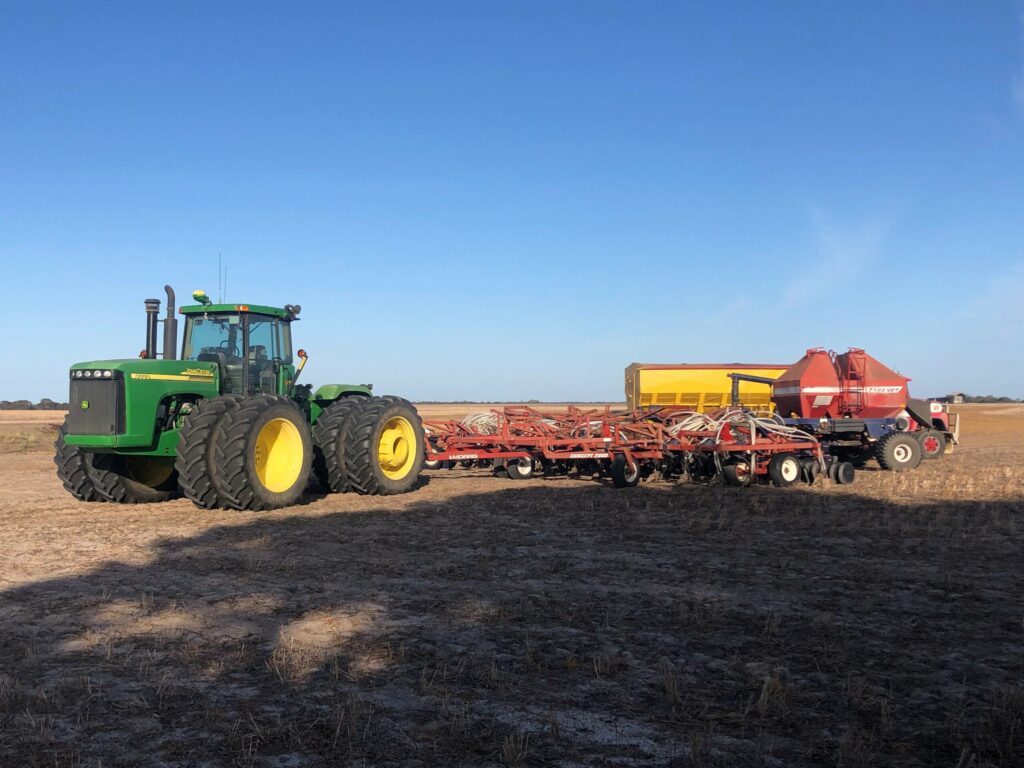Are you prepared for this year’s seeding? While many farmers and their workers will be taking a much-needed break before the seeding season starts, this is also a great time to check your equipment, chemicals, and that your workers are prepared for a productive and safe season ahead.
Let’s take a look at some common farm hazards: machinery, hazardous chemicals, and worker competency.
Machinery
Machinery and moving parts are common sources of harm on farms, which can result in life-threatening injuries, lacerations and crushed fingers. Take some time to inspect the machinery to identify any potential issues with vehicle movement, moving parts or pinch points.
Farms should ensure that vehicle movements are isolated from pedestrians, and guarding is in place to prevent workers from accessing areas where there are moving parts that could cause injury. This may include reviewing and replacing existing guarding that has been damaged or removed. Follow the manufacturer’s instructions, including any pre-start checks that staff need to complete before each use. A simple way to do this is to copy the pre-start checklist from the machine’s manual, laminate it and attach it to the machine for operators to use as a guide.
Safe machinery operation should be supported by staff training so that staff know the correct and safe way to use machinery. WorkSafe WA Code of Practice: “Managing risks of plant in the workplace” is a good resource for further information about machinery and guarding.
Chemicals
Chemicals are an important part of broadacre farming and before seeding is a ideal time to review your hazardous chemicals handling procedures. Some simple steps farms can take include:
- Developing a register of the farm’s chemicals.
- Ensuring that safety data sheets (SDS), available from suppliers, are accessible for workers for each hazardous chemical.
- Conducting risk assessments for each chemical classified as hazardous. Section 2 of the SDS will specify if a chemical is classed as hazardous.
WorkSafe WA Code of Practice: “Managing risks of hazardous chemicals in the workplace” is a good resource for further information about the management of hazardous chemicals.
Speak to your ProcessWorx WHS Advisor to assist you to develop a hazardous chemical process and chemical risk assessments specific to your farm.
Worker competency
Trained workers operate in a more productive, effective and safe manner and it is the Farmer’s responsibility to ensure that workers have the information, instruction and competency to use the equipment and chemicals.
Training can include demonstrating safe use of the machinery, reading the operator’s manual and/or completing external training. Training should be reinforced by a period of supervision to ensure the workers can operate safely and correctly.
Keeping a record of training sessions is best practice and proof of compliance. This can be recorded in a management diary or an induction checklist.
It is important to remember that safety has no “finish line”, it is a continual process of identifying hazards, assessing risk, implementing control measures to eliminate or reduce the risk, and evaluating these control measures.
If you would like to discuss how to reduce your risks during seeding season, speak to one of our ProcessWorx WHS Advisors on (08) 9316 9869 about our Farm Work Health & Safety System that can assist you in meeting your WHS duty of care under the new WHS legislation.
Follow ProcessWorx on LinkedIn, Facebook, Instagram, YouTube, and Twitter to keep up to date with the latest HR and Safety news.
Written by Phillip Gal




